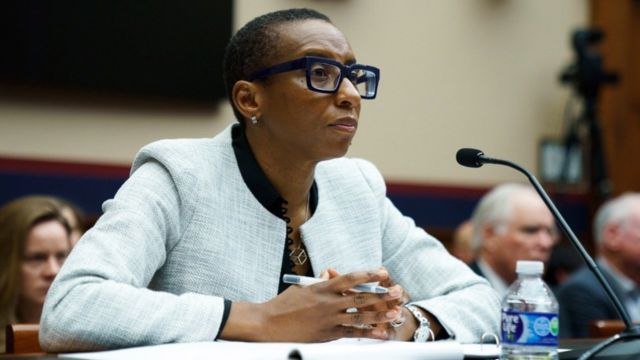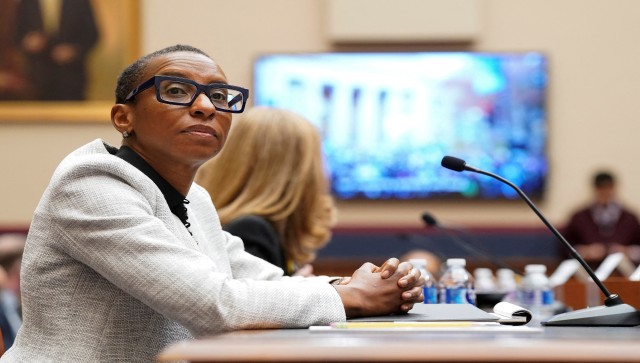Trust the education ministry to fix all the problems that deserve low priority first.
Faced with a sharp deterioration in the quality of the country’s engineering institutes—including the elite Indian Institutes of Technology (IITs)—Union HRD Minister Kapil Sibal is planning changes to the entrance tests, as though that is the priority.
Among other things, Sibal’s ministry wants a common entrance test for all engineering colleges. It also wants to give weightage to a student’s class 12 marks while giving admission to IITs and engineering colleges.
As a first step, in 2013, the IIT-JEE (Joint Entrance Examination) and the All-India Engineering Entrance Examination (AIEEE) will be merged. A Hindustan Times report quotes an anonymous IIT director as saying: “The new entrance examination will have many elements of IIT-JEE as we want to ensure that the best brains join our institutes.”
But wasn’t the IIT-JEE already doing that? Getting the best brains? What stopped the ministry from merely extending IIT-JEE to all engineering colleges in the country that were centrally administered? Why have a new, hybrid exam?
To be sure, the logic of reducing the number of exams students have to take is unimpeachable. Currently, apart from IIT-JEE and AIEEE, there are the state-level Common Entrance Tests and separate tests for engineering colleges run by private promoters (Bits, Pilani, for example). Students thus have to take several tests in addition to their normal Class 12 one.
Reducing the number of test is a laudable objective. Since IIT-JEE is the king of all engineering exams, it would have made eminent sense to make it the standard SAT-equivalent for engineering college admissions in India.
The proposal to give weightage to class 12 results is, however, likely to be more controversial. Schools and junior colleges welcome it , for the problem is students focused on IITs tend to ignore their Class 12 board exams. There is also an implicit assumption that once Class 12 marks become important, students will depend less on coaching classes.
But will it happen that way?
When Class 12 results are given equal weightage for entry to IITs and the National Institutes of Technology (NITs, which get their student feeds from AIEEE), will students go more to coaching classes or less? Even today, students take a year’s break to go to Kota to focus on IIT-JEE. If Class 12 becomes important, some students will, no doubt, drop out of coaching, but more of them will take even more coaching – for both IIT-JEE and Class 12. Their future now depends on maxing both exams. Who will take chances?
But Mr Sibal, the challenge in Indian engineering education is not the quality or number of entrance tests we have , but what you get after crossing these hurdles and reach an IIT or an NIT. Unfortunately, this is not an area receiving much focus since the attempt, as Sibal says, is to get the aam aadmi into engineering institutes.
No one can object to the democratisation of education, but this calls for an improvement in the supply side of things—better faculty, better curriculum, better research—not a lowering of the entry barriers which the entrance exams now set.
Last year, the negative impact of enhancing reservations for OBCs was visible everywhere on IIT campuses: a huge faculty shortage of 2,500. RK Shevgaonkar, IIT, Delhi, director, said last October: “Every IIT is short of 30 percent faculty. This has happened due to the addition of 54 percent seats to accommodate more students in the OBC quota in the past few years. IIT, Delhi, has 416 faculty members against the required 800 teachers.”
But we are still talking only numbers—a shortage of 2,500 faculty for the IITs—not quality.
Little wonder, Rural Development Minister Jairam Ramesh said some time ago that the IITs were known more for the quality of students they got than the quality of education they imparted.
Sibal’s initiative will level the field: now, both the standard of students getting in and the quality of education received will be in better alignment at a lower level.
This, of course, is not the best way to build excellence.
The priorities ought to be different.
A crash course to create more quality faculty is one imperative, but even more important than this is a framework to ensure this: complete autonomy for the IITs and NITs. Not just a little bit here and there, but lots of autonomy.
To understand why, look at Harvard. It is (arguably) the world’s greatest educational institution because it is autonomous – both financially and otherwise. It does not depend on the government for funds. The virtuous circle of autonomy works like this: first, you build a great institution by refusing to compromise on quality; then, your products will succeed and plough back their own wealth into the alma mater, and this money, in turn, will allow the institution to continue hiring the best faculty and students – if necessary by subsidising the best and brightest who can’t afford to enter Harvard.
Governments can legislate equality, but only institutional autonomy will ensure that quality is not compromised on the way to inclusivism.
What do we see in India?
The government continues to interfere with how the IITs are run, not only by lowering entry standards, but also by legislating expansion without the necessary investment in quality faculty and research facilities. The net result: a steady deterioration in the quality of IIT end-products, too. Not to speak of engineering education in general.
As Infosys founder NR Narayana Murthy lamented some time ago, the top 20 percent of IIT students “can stand among the best anywhere in the world," but the quality of the remaining 80 percent is variable – from average to pathetic.
Murthy, as quoted in The Times of India, blames coaching classes for this deterioration since the emphasis is only on cracking IIT-JEE.
His solution: get government out of managing the IITs. According to Murthy, most of the IIT governing councils should come from past alumni. “Nobody is bothered about an institution more than its alumni. We must somehow persuade the government of India to let go of its control and make sure a majority of the council members is the IIT alumni.”
In fact, thanks to this lack of autonomy, India’s super-rich are happier funding Harvard than the IITs or IIMs. A few days ago, Siddharth Yog of Xander Group gave Harvard a $11 million “guru dakshina”, reports The Economic Times.
But Yog is only the latest. Before him Ratan Tata gifted $50 million to Harvard for a new building to house their new executive education centre. Anand Mahindra gave Harvard $10 million for a humanities centre, and Narayana Murthy and his family gifted Harvard $5.2 million to establish a new publication series called The Murthy Classical Library of India. Sanjeev K Mehra of Goldman, Sachs has donated $4 million to create a South Asian Chair at Harvard.
Even the government is joining the bandwagon. In 2008, the UPA gifted Harvard $4.5 million for creating an Amartya Sen fund for Indian students seeking fellowships at its Graduate School of Arts and Sciences. Another £3.2 million was presented to Cambridge University to create a Jawaharlal Nehru professorship of Indian Business and Enterprise.
The underlying reality is clear: Indians, including the government, are happier investing in Harvard and Cambridge than in India.
There can be only reason for this: we don’t expect excellence in Indian institutions.
Mr Sibal, this is the underlying reality you need to address. Autonomy is what you should work for to return the IITs to past glory. Get the government off the backs of our IITs and IIMs - and they will deliver in spades. They will also find their money.
Standardisation of entrance tests is fine, but without institutional autonomy you will merely be standardising mediocrity.


)




)
)
)
)
)
)
)
)